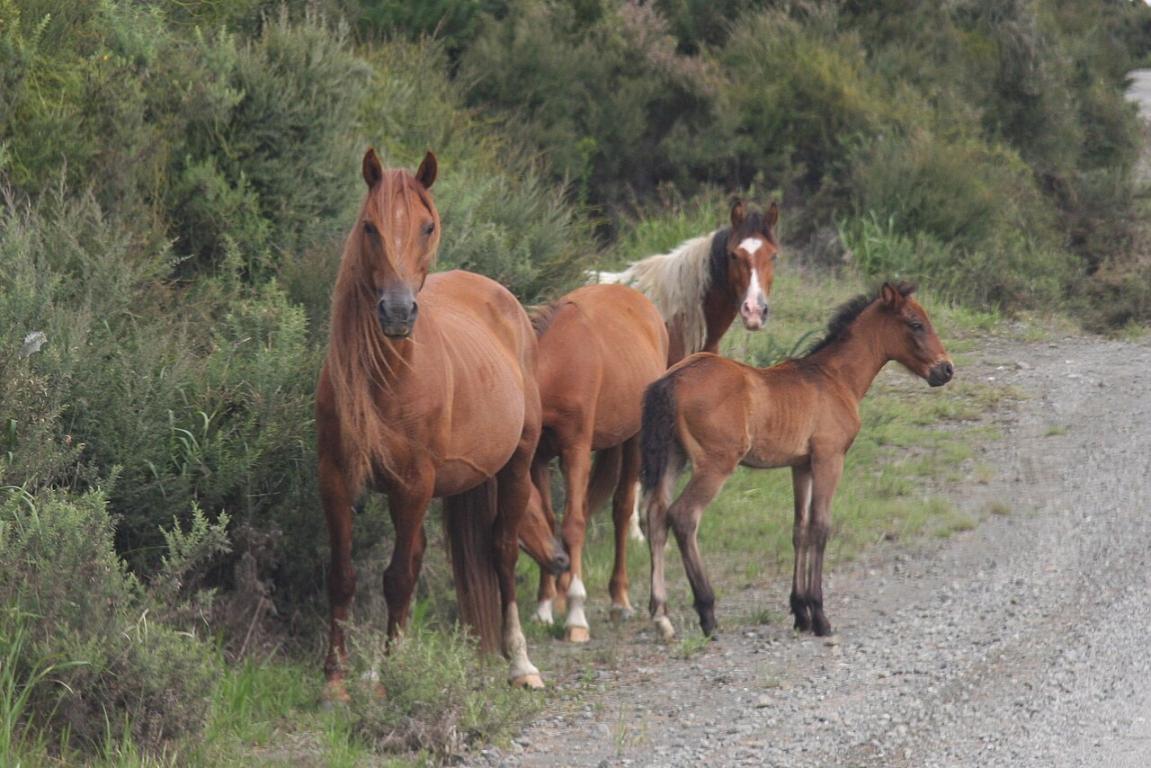
Continent: Oceania
Country: New Zealand
Weight: 300 – 350 kg
Height: 127 – 152 cm
The Kaimanawa horse takes its name from the Kaimanawa Ranges, a mountain range located on the volcanic plateaus in the central part of New Zealand’s North Island. In this remote, harsh-climate region, with vast open grasslands, a wild equine population gradually established itself over the centuries.
The geographical isolation, combined with the absence of natural predators, allowed the development of an autonomous and resilient herd, well adapted to the terrain and climate challenges of the high plateaus.
Over time, these conditions shaped a wild, frugal, and enduring horse, now considered an emblem of New Zealand’s rugged landscapes.
The Kaimanawa horse is a feral population living in a semi-wild state in a mountainous area of central North Island, New Zealand. Their habitat is centered around the Kaimanawa Ranges, particularly in the subalpine Waiouru region, within a military training zone managed by the New Zealand Defence Force (NZDF).
This remote area is defined by:
Until the late 20th century, these horses lived without formal management. Prior to 1981, there was no conservation policy, and the population grew rapidly, reaching up to 1,700 horses by 1997, threatening the area’s fragile ecological balance.
In response, the authorities implemented an environmental management plan:
The genetic importance of the Kaimanawa horse lies primarily in its role as a reservoir of diversity and a living part of New Zealand’s equine heritage.
The presence of horses in New Zealand began in 1814 with their introduction by Reverend Samuel Marsden, an Anglican missionary from Australia.
During the 19th century, the foundation of what would become the Kaimanawa population slowly took shape:
The horse population continued to grow through multiple waves of additions, often unplanned:
In the early 20th century, the Kaimanawa population declined due to:
By 1979, only 174 horses were recorded in the region.
Thanks to this protection, the population surged, reaching approximately 1,576 horses by 1994.
To prevent overpopulation, the government implemented managed regulation:
Since 2010, the goal has been to maintain a stable herd of 300 horses, reducing the need for frequent musters and minimizing animal stress.
The FAO (Food and Agriculture Organization of the United Nations) officially recognizes the Kaimanawa horse as a population of high genetic and heritage value.
Kaimanawa horses are fully feral and live without human interference in a harsh subalpine environment. This origin has shaped their behavior:
This social structure promotes group harmony, learning, and conflict prevention.
“Born free, the Kaimanawa remains a horse of independent spirit, thriving on trust rather than constraint.”
Since May 2022, an innovative strategy has been added to the traditional musters: the introduction of immunocontraception using the GonaCon-Equine vaccine. This contraceptive aims to reduce fertility in mares temporarily but effectively.
This approach is seen as a major step forward in the ethical management of feral horses, combining animal welfare and ecological priorities.
Despite their feral status, Kaimanawa horses possess a notable level of genetic diversity, inherited from various historical bloodlines:
The Department of Conservation (DoC), currently responsible for managing the population, is considering a shift in governance:
This change would support a more collaborative, transparent, and adaptable model suited to modern conservation challenges.
The New Zealand government remains committed to:
The goal of maintaining around 300 horses is reaffirmed as a sustainable compromise between environmental needs and population viability.
Living ferally in rugged, seasonal climates, Kaimanawa horses are exceptionally resilient:
Some issues may arise after removal from the wild: